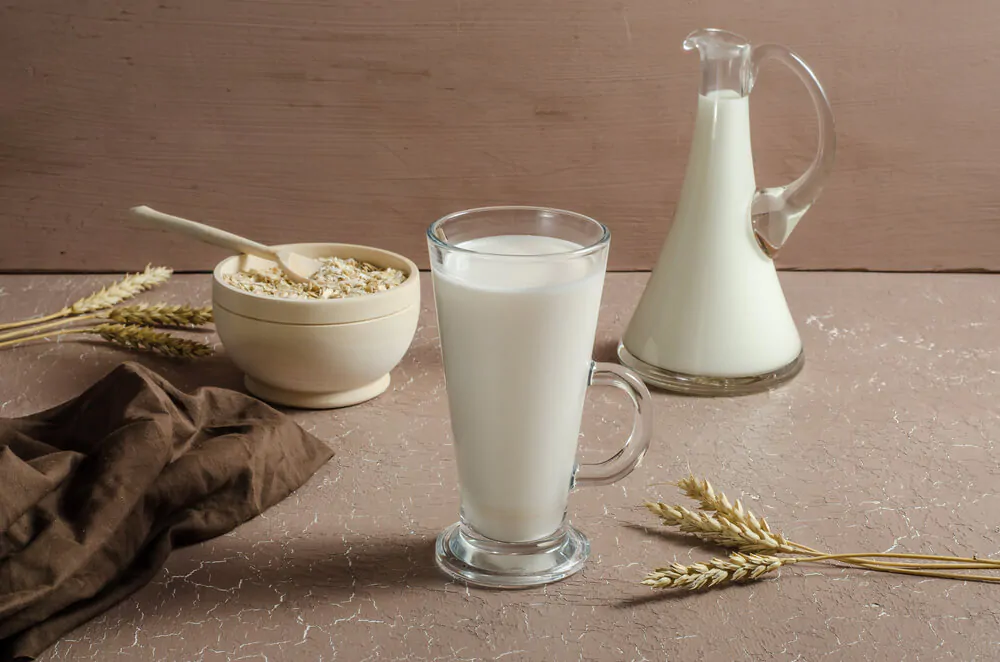Nothing beats a cup of coffee with perfectly frothed milk. However, not all types of milk froth the same, so learn which is the best milk for frothing.

For many coffee lovers, the best part of a cup of Joe isn’t the coffee itself but the delicate, sweet, and creamy frothed milk that sits on top. These days, frothed milk can easily be the star of the show, thanks to coffee and latte art photos on social media.
However, frothing milk is both an art and a science, and some types of milk work better than others for different situations. So, with that in mind, let’s take a deep dive to see what is the best milk for frothing.
The Science Behind Milk Frothing
To understand which milk works best for frothing, you need to know what happens when you froth milk. Here is a quick overview of the science behind this delicious process.
Animal milk contains proteins and fat, which work together when heated to create foam. The more protein and fat within the milk, the thicker the foam. However, extra protein (called casein) can also make it harder to keep the foam intact, as the cells can contract and cause the foam bubbles to collapse more easily.
So, milk with less protein and fat (i.e., skim or almond milk) can maintain frothiness for much longer than whole cow’s milk.
The freshness of the milk also matters, thanks to a substance called glycerol. Glycerol concentrations increase as milk ages and the proteins break down. Warm milk also has a harder time maintaining foam bubbles, so it’s best to use fresh milk out of the refrigerator.
The Best Milk For Frothing
Whole Milk
Best For: Flavor and foam thickness
Because whole milk has the most fat and proteins, you need to make sure that you use a fresh batch. Even if the milk is only a week or two old, it could have too much glycerol, making it harder to create stable foam.
Otherwise, fresh whole milk is ideal for a rich, smooth, creamy texture. You can also achieve better results without a milk frother or steamer wand. The presence of extra fats also yields a sweeter flavor. If whole milk is too calorie-heavy for you, you can switch to one or two percent milk.
A lower fat content means that the foam holds its shape better, but it isn’t as creamy.
Oat Milk

Best For: Flavor for lactose-free frothing
Oat milk is one of the more popular dairy alternatives, thanks to its superb flavor and creaminess. When it comes to frothing, oat milk has plenty of protein and fat (although less than whole milk), creating a similar texture and flavor to whole milk foam.
That said, because oat milk is mostly water (as are most nut milk varieties), it won’t hold the foam for as long as cow’s milk.
Skim Milk
Best For: Lighter foam and easier frothing
By removing the fat from the milk, you don’t have to worry as much about glycerol. If you’re new to the world of milk frothing and want to practice your skills, skim milk will create more stable foam.
The bubbles created from skim milk are much thinner (since there’s no fat) and more delicate, but they are easier to shape.
Almond Milk
Best For: Coffee art and low-calorie foam
Almond milk has much less protein, so it creates smaller and thinner foam bubbles. You also don’t have to heat almond milk as much since you can froth it at 130 degrees F instead of 150 degrees as with regular cow’s milk.
Almond milk does come flavored, which can add extra sweetness to the mix. Even though this milk doesn’t have much protein or fat, it creates long-lasting and stable bubbles, meaning that it works well for latte art.
Soy Milk
Best For: Latte art, flavor, and lactose-free frothing
Since this milk has a decent amount of proteins (seven grams compared to eight grams in cow’s milk), it works well for generating thick, creamy, and stable foam. You still have to worry about glycerol, but not as much as you would with whole milk.
Many coffee shops and baristas like using soy milk instead of cow’s milk because it holds its shape well and has fewer calories. Also, everyone can drink soy milk, including those with lactose intolerance.
Coconut Milk

Best For: Those who love coconut milk or want to save on calories
Depending on the specific brand, you can froth coconut milk much like regular cow’s milk. However, because this liquid has such a distinct flavor, it can offset the taste of the coffee, so it’s not for everyone.
Some coconut milk varieties are much thinner and have more water, meaning they’re almost impossible to froth well. Overall, unless you have a deep connection to coconut milk, we don’t recommend it for frothing.
The Final Word On What Is The Best Milk For Frothing
As you can see, some milk options are ideal for flavoring your coffee, while others hold their shape better for latte art. So, depending on your preference, you might want to use one milk over another.
However, as long as you keep the milk cold and fresh, it should work well for frothing, regardless of the type.
FAQs About What Is The Best Milk For Frothing
Do I need a milk frother or steam wand?
Technically, no. An immersion or standard blender can aerate the milk well enough, but it takes a bit of practice to get it right.
What if I burn my milk when steaming it?
Once milk “burns” and turns brown, it’s impossible to froth because the proteins have broken down too much. In that case, you’ll have to toss the batch and start over.
